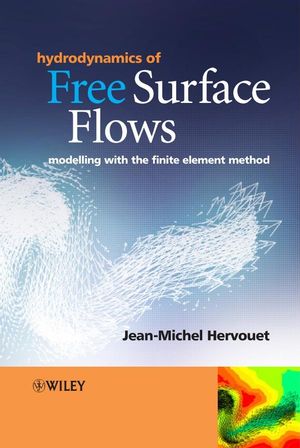Hydrodynamics of Free Surface Flows: Modelling with the Finite Element MethodISBN: 978-0-470-03558-0
Hardcover
360 pages
April 2007
 Other Available Formats: E-book
|
||||||
Understanding the dynamics of free surface flows is the starting point of many environmental studies, impact studies, and waterworks design. Typical applications, once the flows are known, are water quality, dam impact and safety, pollutant control, and sediment transport. These studies used to be done in the past with scale models, but these are now being replaced by numerical simulation performed by software suites called “hydro-informatic systems”. The Telemac system is the leading software package worldwide, and has been developed by Electricité de France and Jean-Michel Hervouet, who is the head and main developer of the Telemac project.
Written by a leading authority on Computational Fluid Dynamics, the book aims to provide environmentalists, hydrologists, and engineers using hydro-informatic systems such as Telemac and the finite element method, with the knowledge of the basic principles, capabilities, different hypotheses, and limitations. In particular this book:
- presents the theory for understanding hydrodynamics through an extensive array of case studies such as tides, tsunamis, storm surges, floods, bores, dam break flood waves, density driven currents, hydraulic jumps, making this a principal reference on the topic
- gives a detailed examination and analysis of the notorious Malpasset dam failure
- includes a coherent description of finite elements in shallow water
- delivers a significant treatment of the state-of-the-art flow modelling techniques using Telemac, developed by Electricité de France
- provides the fundamental physics and theory of free surface flows to be utilised by courses on environmental flows
Hydrodynamics of Free Surface Flows is essential reading for those involved in computational fluid dynamics and environmental impact assessments, as well as hydrologists, and bridge, coastal and dam engineers. Guiding readers from fundamental theory to the more advanced topics in the application of the finite element method and the Telemac System, this book is a key reference for a broad audience of students, lecturers, researchers and consultants, right through to the community of users of hydro-informatics systems.



